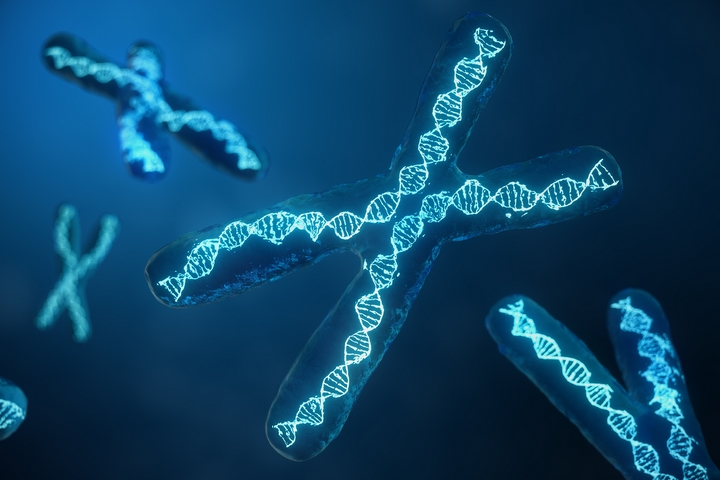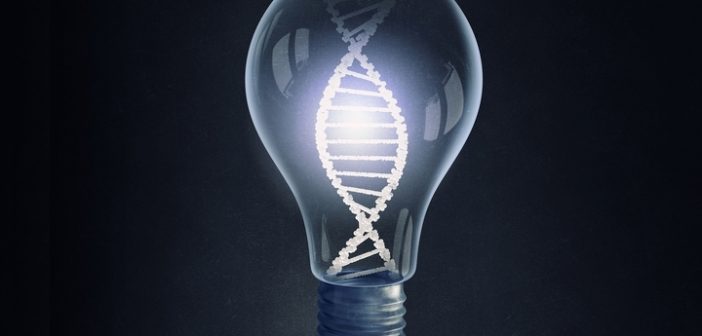Where human beings come from, what illnesses or conditions one is prone to, certain personality proclivities, and why their features are the way that they are can all be explained somewhat through one’s genetic makeup.
According to the Human Genome Project, we’re believed to have between 20,000 and 25,000 genes. For anyone new to the world of genetics and/or who may be interested in having their DNA tested, here are some genetic facts to get your head around.
Fact 1 – The term ‘gene’ was coined only in the early 1900s.
 The first time the word ‘gene’ was uttered in this context was in 1909 by Danish botanist Wilhelm Johannsen. Although Gregor Mendel, the father of genetics, conducted genetic-based experiments in the mid-1800s, the phrase wasn’t coined at that time. From Johannsen, the word ‘genes’ originates from ‘pangenesis’, a term coined by Charles Darwin to describe heredity.
The first time the word ‘gene’ was uttered in this context was in 1909 by Danish botanist Wilhelm Johannsen. Although Gregor Mendel, the father of genetics, conducted genetic-based experiments in the mid-1800s, the phrase wasn’t coined at that time. From Johannsen, the word ‘genes’ originates from ‘pangenesis’, a term coined by Charles Darwin to describe heredity.
Fact 2 – Humans are more than 99 percent identical.
 All human beings carry in them more than 99 percent of identical genes. The diversity we see visually stems from the small amount of genes which are different person-to-person. Eye color, height, blood type, and other characteristics are decided on according to these genes. Same-gene variations capable of these distinguishing characteristics are referred to as ‘allelles’.
All human beings carry in them more than 99 percent of identical genes. The diversity we see visually stems from the small amount of genes which are different person-to-person. Eye color, height, blood type, and other characteristics are decided on according to these genes. Same-gene variations capable of these distinguishing characteristics are referred to as ‘allelles’.
Fact 3 – Human genes may prevent us from living beyond age 125.
 Tech and medicine are advancing rapidly however when it comes to aging, we may have a massive problem. The maximum human age, as dictated by our genetics, is believed to be between 115 and 125 years.
Tech and medicine are advancing rapidly however when it comes to aging, we may have a massive problem. The maximum human age, as dictated by our genetics, is believed to be between 115 and 125 years.
Cells can only replicate so many times, eventually becoming damaged with age. Even through gene therapy, our cells cannot be modified fast enough to extend our maximum age. It is unrealistic to think human beings will live any longer – at least based off what we know currently regarding genetics, medicine, and technology.
Fact 4 – Genes in sperm are rapidly evolving.
 ‘Sperm competition genes’, as they’re referred to, are rapidly evolving to learn how to fertilize eggs more effectively. This phenomenon is seen in human beings, some primates, and marine invertebrates as well. Males are competing against other males on a genetic level to father offspring. Although the reason is unknown, proteins in sperm genes are changing to give males ability to impregnate more reliably.
‘Sperm competition genes’, as they’re referred to, are rapidly evolving to learn how to fertilize eggs more effectively. This phenomenon is seen in human beings, some primates, and marine invertebrates as well. Males are competing against other males on a genetic level to father offspring. Although the reason is unknown, proteins in sperm genes are changing to give males ability to impregnate more reliably.
Fact 5 – Genes can disappear.
 As we evolve over time, genes can in fact change, break, or disappear altogether. Some mammals can produce their own vitamin C, as an example. At some point in evolution, human beings had that ability as well and lost it. Exploring our genome, you’ll find half the gene for manufacturing vitamin C and the other half missing.
As we evolve over time, genes can in fact change, break, or disappear altogether. Some mammals can produce their own vitamin C, as an example. At some point in evolution, human beings had that ability as well and lost it. Exploring our genome, you’ll find half the gene for manufacturing vitamin C and the other half missing.
Fact 6 – Elephants may have a cancer-protection gene.
 According to a 2018 report, elephants are believed to have a cancer-suppressing gene that is believed to have been non-functioning at one point and which has been activated recently. Called a ‘zombie gene’, it is believed its presence helps to explain why elephants maintain significantly lower rates of cancer than other species.
According to a 2018 report, elephants are believed to have a cancer-suppressing gene that is believed to have been non-functioning at one point and which has been activated recently. Called a ‘zombie gene’, it is believed its presence helps to explain why elephants maintain significantly lower rates of cancer than other species.
Approximately 5 percent of elephants develop and die from cancer. Comparatively, up to 25 percent of humans die from cancer and this isn’t mentioning the amount who will develop cancer.
Fact 7 – Genetic mutations exist.
 Look closely at old pictures of Hollywood actress the late Elizabeth Taylor and you’ll see she has two rows of eyelashes. This is the direct result of a genetic mutation, associated with the FOXC2 gene.
Look closely at old pictures of Hollywood actress the late Elizabeth Taylor and you’ll see she has two rows of eyelashes. This is the direct result of a genetic mutation, associated with the FOXC2 gene.
Although a genetic mutation like this may seem desirable, in other people, the same mutation has required eyelash removal as it prevent eye damage. It’s important to remember genetic mutations can have negative or positive consequences depending.
Fact 8 – Octopuses can gene-edit.
 Squids, cuttlefish, octopuses, and other cephalopods are intelligent enough to be able use neurons to re-write their genetic information. An octopus gene can produce multiple protein, compared to humans which only have one gene coding for one protein.
Squids, cuttlefish, octopuses, and other cephalopods are intelligent enough to be able use neurons to re-write their genetic information. An octopus gene can produce multiple protein, compared to humans which only have one gene coding for one protein.
Fact 9 – Humans share DNA information with other animals.
 Human beings share a lot of the same genetic information as other information. For example, scientists have found we share 52 percent similar genetics to flies. Although this may seem problematic, it presents an opportunity in genetic engineering to select genes and insert them into other organisms’ genomes. There are all types of interesting genetic inventions based on editing like this.
Human beings share a lot of the same genetic information as other information. For example, scientists have found we share 52 percent similar genetics to flies. Although this may seem problematic, it presents an opportunity in genetic engineering to select genes and insert them into other organisms’ genomes. There are all types of interesting genetic inventions based on editing like this.
Fact 10 – There is no ‘creativity gene’.
 Musicians, artists, and creators of all backgrounds are not made creators based on a ‘creativity gene’. This simply doesn’t exist. As we grow up, we are exposed to different traits and characteristics controlled by a single gene. Creativity is not.
Musicians, artists, and creators of all backgrounds are not made creators based on a ‘creativity gene’. This simply doesn’t exist. As we grow up, we are exposed to different traits and characteristics controlled by a single gene. Creativity is not.
The vast majority of interesting behavioral traits and variations in personality are complex, typically involving hundreds and potentially thousands of genes. About a person, environmental factors also play a central in deciding such things.
Fact 11 – DNA testing kits do not show intelligence.
 No genetic testing will demonstrate your level of intelligence and that’s because intelligence is difficult to measure. It’s influenced by many different genes. The reality of any intelligence prediction through DNA testing is believed to be less than 5 percent.
No genetic testing will demonstrate your level of intelligence and that’s because intelligence is difficult to measure. It’s influenced by many different genes. The reality of any intelligence prediction through DNA testing is believed to be less than 5 percent.
Assuming two people undergo genetic testing, there’s nothing to say which person is smarter than the other. Subsequently, environmental factors also have a great deal of influence on intelligence.




